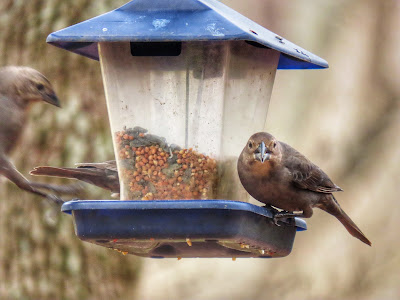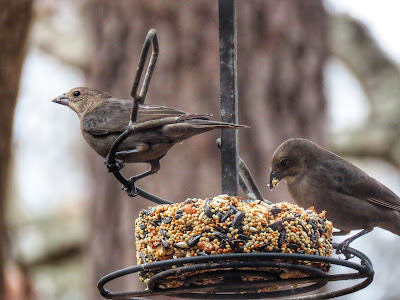A recent brief photo shoot in my backyard reminded me of how fortunate I am to live where I live, to have the bird feeder arrangement I have, and to have this hobby I have.
Relaxing on the deck one morning during my recent Spring Break from teaching college, I photographed several types of birds in a short length of time, all while sitting comfortably in an Adirondack chair.
In this photo you see the approximately 15 feet it is from the chair to the array of tube, suet and bark butter offerings hanging from the elaborate feeder station. Birds currently have 11 choices at the buffet, plus two bird baths (seen flanking the feeders).
Alesia (who took these pictures) and I will reach a milestone 30 years in our home this June. In the backyard is where my interest in photographing birds and learning about them slowly grew and flourished.
On the day I photographed the birds in this post, March 8 at around 11;30 a.m., I was pleased with the quality of the images, particularly how well the eyes of the different species are prominent. See if you agree.
I try to photograph birds not just at the feeders and baths but also in the nearby trees, bushes and on the ground where lots of seeds end up after falling from the feeders. We also have a small pond at the edge of our property that attracts many larger birds such as Herons and Egrets, as well as turtles and alligators.
I had a bit of a mystery with this splotchy Baltimore Oriole. It lacks the adult male’s brilliant orange colors so I thought this a female. Research reveals it to be a juvenile male. In the weeks ahead the black will expand throughout the head and neck and the yellow breast will become orange.
Here’s another feeder regular with brilliant coloring, the Northern Cardinal.




















No comments:
Post a Comment